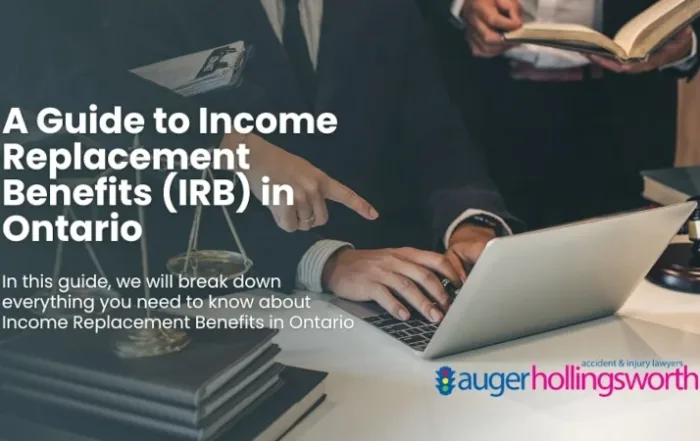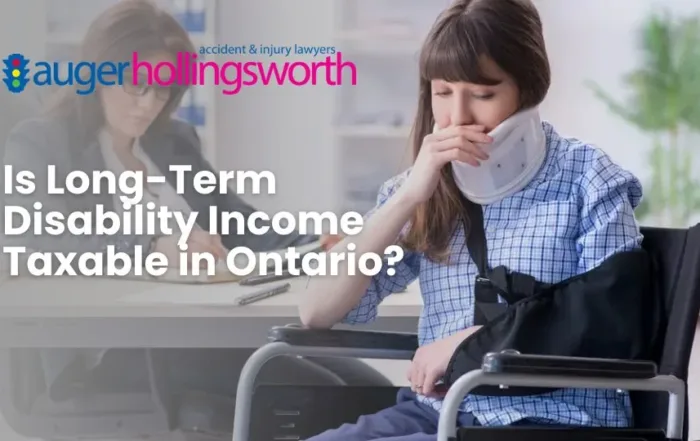Answering your Questions about Toronto Long Term Disability Denial
If you have been injured or are sick and can no longer do your job, long-term disability benefits can be essential to your family’s well-being. The very last thing you want on your mind when you’re dealing with injury or illness is how you’re going to support those who count on you financially. Long-term disability benefits allow you to make your medical recovery your number one focus.
The world of long-term disability can be overwhelming and confusing when you are trying to figure out what you’re entitled to, while also facing health challenges. We are going to answer some of your basic questions in this article.
What is the difference between long-term disability and short-term disability?
First, the amount of insurance coverage and the length of your coverage depends on the specific insurance plan for policy that you have purchased. If you were part of a group disability plan through your employer, your employer will have selected whether or not to provide both long-term disability and short-term disability.
What is short term disability?
Short term disability (STD) is insurance that covers part of your salary for a limited duration. A typical percentage is 70% although it can be higher or lower than that amount. A typical duration is between 16 and 24 weeks. However, some policies have short term disability for a full year.
In Ontario, some employers rely on the Employment Insurance (EI) program through the federal government for their short term disability. Employment insurance sick leave may provide up to 15 weeks coverage.
What is long term disability?
Long-term disability benefits typically start after short term disability or EI benefits run out. If you are not able to return to work during the time stipulated in the short term disability policy or the 15 weeks of EI benefits, your long-term disability benefits may kick in.
Long term disability may last two years, or to a fixed date. Most often long-term disability lasts until you turn 65, as long as you continue to meet the disability test.
The amount that your long-term disability insurance company pays you may be reduced by other sources of disability income. For example, your long-term disability insurance company might require that you apply for Canada Pension Plan Disability benefits or WSIB benefits. If you qualify for those benefits, they will be subtracted from the amount your long term disability insurance company pays.
Who receives long term disability?
In order to receive long-term disability insurance, you must have a policy in place at the time that you are injured or become ill.
Either, you are employed by a company that has purchased a group insurance policy or you have personally purchased a disability policy on your own. Every disability insurance plan has specific disability requirements that determine if you qualify for disability benefits.
In other words, whether you are going to have coverage depends on the fine print in the policy available to you. There are many different definitions for disability depending on the policy you or your employer purchased.
Is my condition covered by LTD?
Typically long-term disability insurance covers a broad range of conditions spanning from traumatic brain injury to broken bones or cancer. There may also be coverage for mental health issues such as depression or anxiety. In most cases the policy will cover you As long as you are totally disabled as defined by your insurance policy. That means you are unable to perform your duties at work or elsewhere.
Do you have a pre-existing condition?
If you have a pre-existing condition at the time you enter into your long-term disability insurance agreement with the insurance company, coverage for disability that is caused by that pre-existing condition might be excluded. In order to know whether that’s the case it is necessary to look at the specific wording of your policy. Pre-existing conditions generally include any physical mental or emotional condition that prompted you to see a medical professional for treatment before you obtained coverage. Common pre-existing Conditions include arthritis, depression or anxiety, asthma or cancer.
What does own occupation, or any occupation mean?
Many disability insurance policies distinguish between “any” occupation and “own” occupation. Typically, when you first apply for disability benefits you only have to demonstrate that you are in capable of performing your own occupation, that means the job that you are currently doing at the time that you become disabled.
However, many disability insurers have a new test for disability after a certain length of time, commonly two years. After that time elapses, you may only be entitled to long-term disability benefits if you cannot work at any job whatsoever for which you are suited. Many people who receive long-term disability after an illness or accident face a challenge at the two-year mark when they must prove that their condition prevents them from doing any reasonable occupation. Very often, our law firm sees denials at this stage.
How can Auger Hollingsworth help with your long-term disability?
Our injury law firm has helped many clients like you obtain long-term disability benefits after an insurance company has denied or terminated benefits. We have a successful track record and our clients our highly satisfied with our long-term disability services. If you would like to know whether we can help with your long-term disability denial, please reach out to us for a no obligation free consultation. We will listen to your story and read your long-term disability policy to help understand your rights and entitlements. If you’ve been denied improperly, we can describe what we will do to get your benefits reinstated or to get you a lump sum settlement in appropriate cases.














